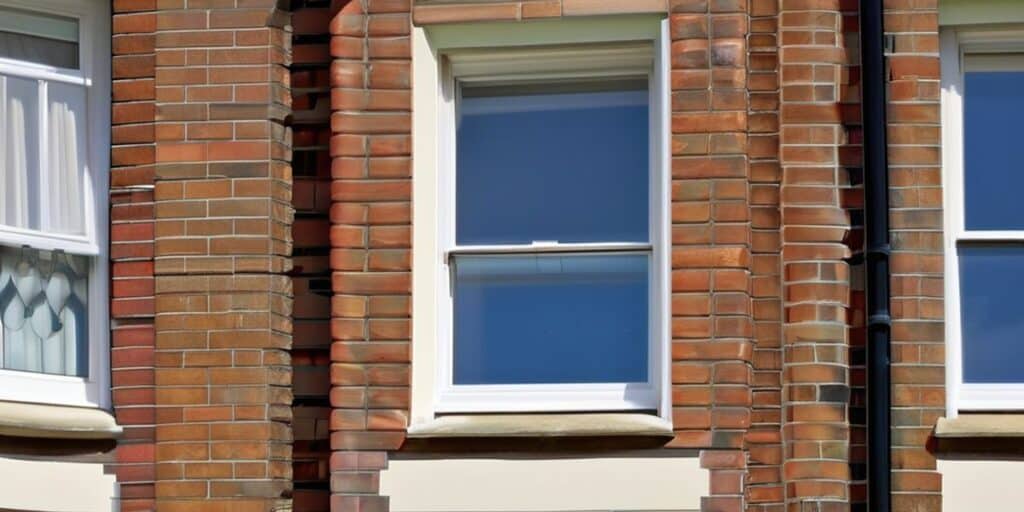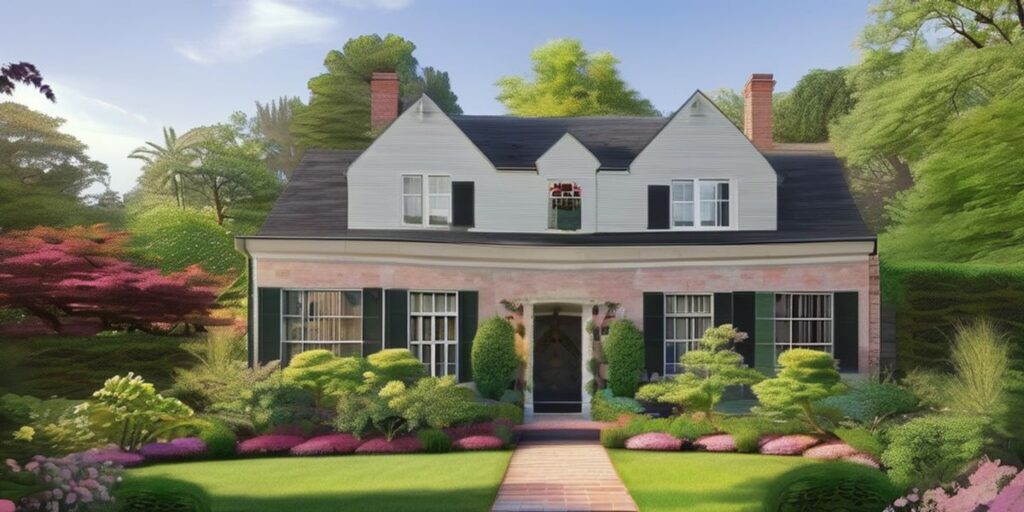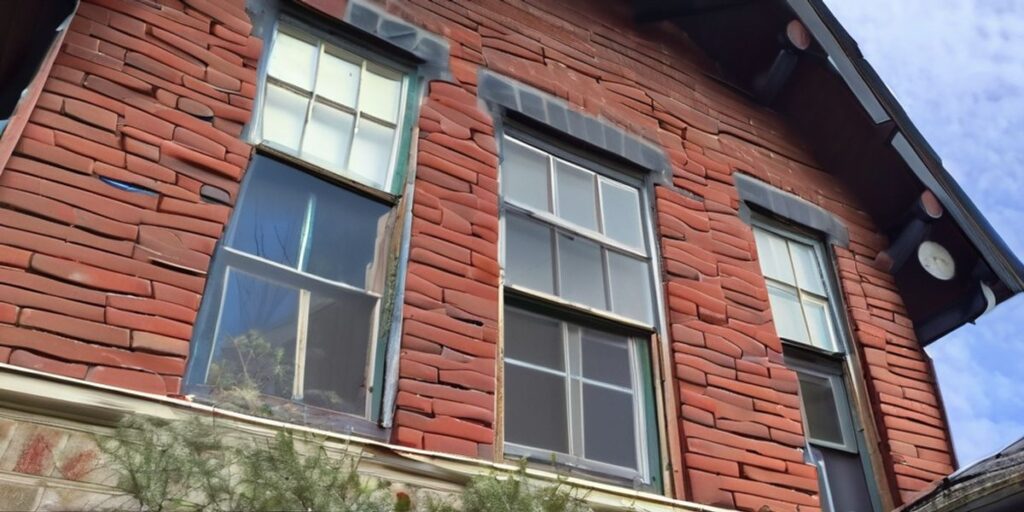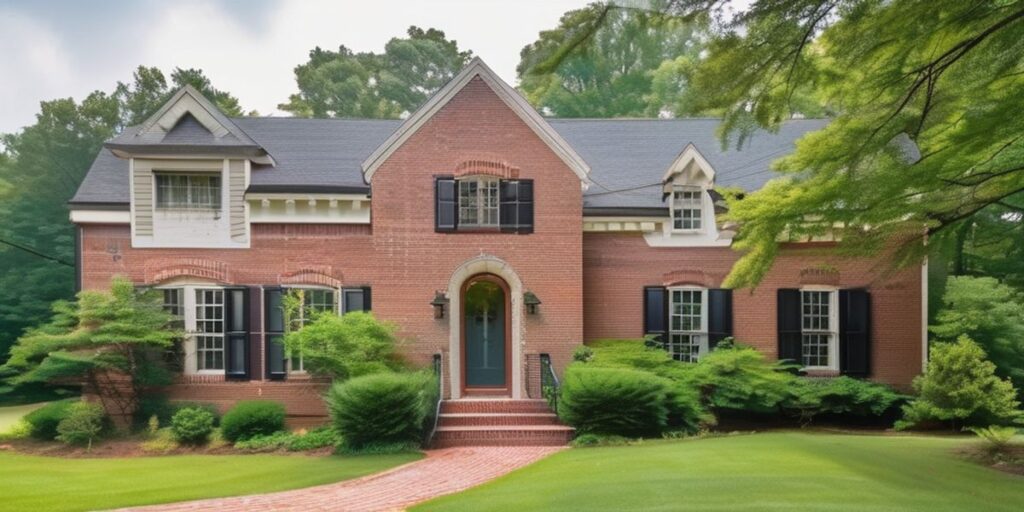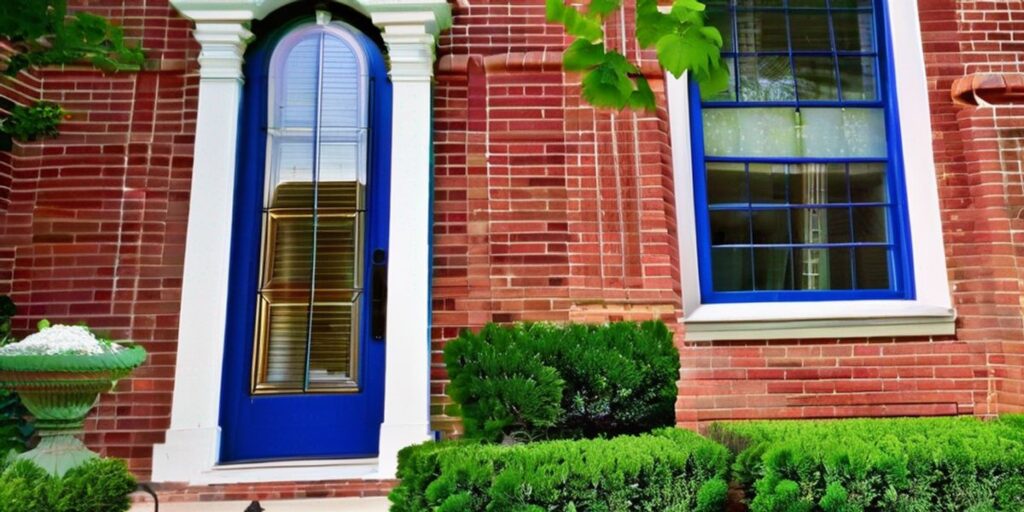The charm of Cambridge homes is undeniable, and one of the ways to enhance and preserve this charm is through exterior brickwork painting. This article delves into the art of painting exterior brickwork, sharing restoration stories of famous buildings, and introducing Revive Restoration, the experts in home revival. We will also explore innovative masonry repair techniques and the aesthetic impact of brick accents on home exteriors. Whether you’re a homeowner looking to refresh your property or a restoration enthusiast, these insights will guide you through the process of reviving the historical and aesthetic value of brick homes.
Key Takeaways
- Choosing the correct type of paint is crucial for exterior brickwork to ensure durability and compatibility with the brick’s porous nature.
- Proper preparation and application techniques are essential for painting exterior brickwork to achieve a long-lasting and aesthetically pleasing finish.
- Regular maintenance of painted brickwork is necessary to preserve its appearance and protect it from environmental elements.
The Art of Exterior Brickwork Painting
Choosing the Right Paint for Your Brick Home
When it comes to painting the exterior brickwork of your home, selecting the right paint is crucial for both aesthetics and durability. The type of paint you choose must be compatible with brick and able to withstand the elements.
- Water-based paints are often recommended for brick because they allow the material to breathe, preventing moisture from becoming trapped and potentially causing damage.
- It’s important to consider the finish of the paint as well. A flat or matte finish can help to hide imperfections in the brickwork, while a glossier finish can highlight details and provide a more durable surface.
The color scheme you select can dramatically affect the appearance of your home. Light and neutral tones can make your home feel more inviting, while darker colors can add a sense of solidity and grounding.
Remember, the goal is to enhance the natural beauty of the brick, not to overshadow it. Take the time to sample different colors in various lighting conditions to ensure you make the best choice for your home’s exterior.
The Process of Painting Exterior Brickwork
The process of painting exterior brickwork is a meticulous task that requires careful planning and execution. Here are the key steps involved:
- Surface Preparation: Before any paint is applied, the brick surface must be thoroughly cleaned and any loose mortar or debris removed. This may involve pressure washing and the use of specialized cleaning agents.
- Moisture Control: It’s crucial to resolve any moisture challenges before painting. This includes ensuring proper drainage away from the brickwork and possibly applying a waterproofing sealant.
- Paint Selection: Selecting suitable exterior brick paint for sun-exposed areas in Cambridge requires consideration of architectural style, climate, paint types, color durability, application techniques, and local expertise.
- Application: The paint should be applied in even coats, using brushes or rollers designed for textured surfaces. The number of coats will depend on the paint type and the desired opacity.
- Sealing: Once the paint has dried, a sealant may be applied to protect the paint from weathering and to enhance its longevity.
When choosing colors, consider the surrounding environment and the architectural style of your home. Vintage brick painting techniques for Cambridge’s heritage homes involve choosing earthy tones, dabbing contrasting colors, and sealing for durability and aesthetic enhancement.
An experienced exterior painter will be familiar with these steps and can provide valuable insights into the best practices for painting your brick home. It’s important to consult with professionals who understand the unique challenges, such as resolving moisture challenges in painting brick houses in Cambridge. Discussing moisture control, waterproofing strategies, restoration, prevention, and aesthetic benefits of brick features with an expert can ensure a successful and lasting paint job.
Maintaining Your Painted Brickwork for Longevity
To ensure the aesthetic appeal of your painted brick exteriors endures through the years, a regimen of care is essential. Here are some key maintenance tips:
- Regular inspections to catch any issues early on
- Gentle cleaning with a soft cloth and mild detergent to remove dirt and grime
- Proper surface preparation before any touch-up work
- Application of a suitable primer to protect the paint from the elements
Remember, the longevity of your paint job is not just about the initial application, but also about the ongoing care.
Consistent maintenance not only preserves the beauty of your home but also safeguards your investment.
In the Cambridge area, where historic and iconic structures like the King’s College Chapel stand as testaments to enduring masonry, maintaining your home’s exterior is particularly resonant. Just as these landmarks have been preserved through meticulous care, so too should your painted brickwork be treated with the same level of attention to ensure it remains a source of pride for years to come.
Restoration Stories: Bringing Buildings Back to Life
Historic Mill – Masonry Structural Repair in Kent
The restoration of the historic mill in Kent is a testament to the meticulous care required in masonry structural repair. Preserving the integrity of such structures involves a multi-faceted approach:
- Assessment of the existing damage
- Selection of appropriate materials for repair
- Cleaning and preparation of the brickwork surface
- Careful application of repair techniques
This process ensures that the brickwork not only regains its structural soundness but also its aesthetic appeal. Enhancing brick beauty in Oakville through historical color choices, professional expertise, and community engagement is a parallel approach that emphasizes the importance of maintaining the character of heritage buildings.
The goal is to achieve a restoration that is sympathetic to the original design, using techniques that include cleaning, repairing, staining, and painting for lasting preservation.
While the focus is on the mill, it’s worth noting that similar principles apply to other landmarks, such as the restoration efforts seen at St. Mary’s Church in Cumbria. The dedication to preserving our architectural heritage is a shared responsibility that enriches our communities.
Restoring a Famous Façade – Cambridge City Hotel
The restoration of historical facades, such as the Cambridge City Hotel, is a delicate process that intertwines the preservation of architectural heritage with modern restoration techniques. Historical homes painting requires proper surface preparation, color matching, and application methods. Community involvement in color decisions is crucial, as it not only preserves heritage but also shapes the future. This can be achieved through town hall meetings, surveys, and workshops.
Preparation is key for painting brick surfaces. It involves meticulous cleaning, repairing any damage, and ensuring the brick is ready to receive paint. Regular maintenance is essential to preserve the integrity of the painted surface and to extend its longevity. It’s important to choose suitable products that ensure durability and can withstand the elements.
Brick conservation requires expertise in historical masonry and modern painting techniques. Local artisans play a pivotal role in preserving the unique brick heritage with specialized painting methods and careful restoration.
While the Cambridge City Hotel is not a landmark, the restoration of such buildings contributes significantly to the architectural tapestry of the area. It’s a testament to the skill and dedication of those who work to maintain the historical character of Cambridge’s built environment.
Revive Restoration: Experts in Home Revival
Weather-related considerations are also crucial, especially when dealing with the unpredictable climate of Cambridge. Selecting the right materials and timing the work can be the difference between a lasting finish and a short-term solution.
Restoring Grade 1 Listed Buildings and Celebrity Homes
Restoring Grade 1 listed buildings and homes of notable figures requires a meticulous approach to ensure that the historical integrity and aesthetic value of the properties are preserved. Professional application and a deep understanding of historical accuracy are paramount in these projects.
- Historical research and analysis
- Selection of appropriate color restoration solutions
- Application of durable brick coatings
These steps are crucial for enhancing building aesthetics by reviving faded bricks and ensuring the longevity of the restoration work. Advancements in brick coatings focus on durability and moisture control, which are essential for the preservation of these prestigious properties.
It is essential to balance the need for modern protection with respect for the building’s original character.
In Cambridge, the restoration of such buildings often involves collaboration with local heritage bodies to maintain the city’s architectural legacy. While not every project involves a landmark, the principles of restoration remain consistent, aiming to honor the past while securing the building’s future.
Why Our Clients Trust Revive Restoration
Clients choose Revive Restoration for their exterior brickwork painting needs due to a combination of factors that ensure satisfaction and durability. Attention to detail is paramount in our approach, from the initial scraping and cleaning to the final coat of paint. Our process is meticulous, ensuring that each step is performed with care and precision.
- Customized solutions: Every home is unique, and so are our services. We tailor our approach to meet the specific needs of your brickwork, whether it’s a quaint cottage or a stately manor.
- Quality materials: We use only high-quality paints that are designed to withstand the elements, ensuring that your home not only looks great but is also protected.
- Expertise: Our team has extensive experience in painting and restoring brickwork, which means we can handle any challenges that may arise during the process.
Our commitment to excellence is unwavering, and we believe that it’s the small details that make the biggest difference in the long-term appearance and integrity of your painted brickwork.
In addition to these core principles, we focus on repairs that are often necessary before painting can begin. This ensures that the paint adheres properly and lasts longer. By choosing Revive Restoration, you’re investing in a service that values the longevity and aesthetic appeal of your home.
Innovative Techniques in Masonry Repair
Proper preparation and expert consultation are key factors in the successful application. Whether it’s reinforcing a bed joint or stitching a crack, the correct approach can greatly enhance the durability of the repair. For instance, crack stitching kits are often utilized to mend fractures in brickwork, providing a robust solution that preserves the building’s architectural heritage.
- Crack Stitching: A method to repair and stabilize cracked masonry.
- Bed Joint Reinforcement: Adds strength to horizontal mortar joints.
- Damp Proofing: Protects against moisture ingress, a common issue in older buildings.
The goal is not only to repair but to enhance and protect brick homes, ensuring that the work done today withstands the test of time.
While the focus here is on the technical aspects of restoration, it’s worth noting that trends in areas like Brantford emphasize the importance of quality and durability, reflecting a broader commitment to maintaining the character of our built environment.
Crack Stitching and Structural Repairs Explained
Crack stitching is a method used to enhance the structural integrity of masonry. It involves the insertion of long, stainless steel bars into the mortar joints, effectively ‘stitching’ the cracks together. This technique is particularly useful for repairing cracks that occur due to settlement, thermal movement, or increased loads on the walls.
- Assessment: A thorough examination of the crack is essential to determine the cause and the best repair strategy.
- Installation: Specialized tools are used to insert the bars into the mortar joints, which are then grouted to secure them in place.
- Finishing: The repaired area is often repointed or rendered to match the existing brickwork, ensuring a seamless finish.
Maintaining the integrity of a building’s structure is crucial, not only for safety but also for preserving its aesthetic appeal. Crack stitching offers a discreet and effective solution for masonry repairs.
While crack stitching is a reliable repair method, it is important to address the root cause of the cracking to prevent future issues. Regular inspections and maintenance can help to identify potential problems early, safeguarding the longevity of the structure.
Damp Proofing and Waterproofing Solutions
Ensuring the longevity of your home’s exterior brickwork involves more than just a fresh coat of paint. Damp proofing and waterproofing are critical components in protecting your home from moisture-related damage. Here are some key considerations:
- Waterproofing Membranes: These barriers are applied to prevent water ingress. They come in various forms, such as liquid-applied coatings or pre-formed sheets.
- Drainage Solutions: Proper drainage systems, including channels and sump pumps, are essential to manage water around your home’s foundation.
- Surface Treatments: Applying treatments like damp proof paint can help to repel water and prevent it from seeping into brickwork.
It’s important to address any signs of damp or water damage promptly to avoid more extensive and costly repairs in the future.
While paint can provide a level of protection, it should be part of a comprehensive approach that includes waterproofing and drainage to effectively safeguard your home against the elements.
Enhancing Home Exteriors with Brick Accents
The Aesthetic Appeal of Brick Accents
Brick accents can transform the exterior of a home, offering a blend of traditional charm and modern sophistication. Adding brick accents to your home’s exterior isn’t just about aesthetics; it’s a practical choice that can enhance the structure’s character and durability.
- Sophistication and Grandeur: Red brick, in particular, is known for its sophisticated and grand appearance. Incorporating it into exterior design elements, such as a deck, can create an elevated statement that ties the property’s look together.
- Marketability and Protection: A home with high curb appeal, including a well-executed brick accent, may sell faster and for a higher price. Moreover, brickwork can offer additional protection from harsh weather conditions.
- Eco-Friendly Options: Sourcing used bricks not only is cost-effective but also eco-friendly. It allows homeowners to integrate a sense of history and sustainability into their home design.
When considering brick accents, it’s essential to think about the climate in your area. In places with harsh weather, like Burlington, choosing UV-resistant paints can extend the lifespan of your painted brickwork.
Brick accents come in various colors and designs, from traditional red to grey, brown, and even multicolored options. Homeowners can select bricks that complement other materials used on their property, such as stone or stucco, to create a cohesive and appealing exterior.
Incorporating Brick Accents into Modern Designs
In the realm of modern home design, the integration of brick accents can significantly enhance the aesthetic appeal of a property. Choosing the right color for outdoor brick is crucial, not only for the visual impact but also for maintaining the home’s value. Earthy tones, pastels, vibrant accents, and classic whites are popular choices that can complement a home’s existing style while adding a touch of elegance.
When considering the addition of brick accents, it’s important to focus on areas that will benefit most from this feature. For instance, creating a focal point on an exterior wall can energize the space, much like an accent wall does in an interior setting. Here are some key considerations:
- Evaluate the existing exterior materials and colors
- Determine the best location for the brick accent
- Select a brick color that harmonizes with the home’s palette
- Consider the texture and size of the bricks for a balanced look
Enhancing curb appeal is about more than just aesthetics; it’s about creating a cohesive design that reflects the homeowner’s style and ensures lasting beauty and structural integrity. A well-thought-out brick accent can serve as a statement piece that draws the eye and complements other architectural features.
While trends may come and go, the timeless charm of brick as an accent feature remains a steadfast choice for homeowners looking to infuse character into their modern homes.
Case Study: A Transformation with Brick Accents
The addition of brick accents to a home’s exterior can significantly enhance its aesthetic appeal. Creative accent painting ideas for brick exteriors can transform the look, adding character and style with unique techniques and bold color choices. Homeowners often choose to update their properties with these accents because they offer a distinct appeal that complements other materials like stone or stucco.
When considering a transformation with brick accents, it’s important to:
- Experiment with harmonizing neutrals, contrasting brights, and balancing pastels for a visually appealing effect.
- Consider the finish of the paint; matte versus glossy can greatly affect the overall look.
- Match the brick paint to the landscape to create a cohesive design.
- Explore texture techniques to add depth and dimension to the brickwork.
The right color choice and application technique can elevate the brickwork to not just a feature, but a statement piece of the home’s exterior.
It’s also crucial to apply paint with precision and consider the impact of lighting on the colors chosen. The goal is to achieve a modern finish that reflects the homeowner’s personal style while ensuring the transformation is in harmony with the surrounding environment.
Transform your home’s curb appeal with our expert brick accent services at We Paint Siding! Our skilled professionals specialize in enhancing home exteriors, ensuring a stunning and durable finish that will make your house the envy of the neighborhood. Don’t settle for a faded and outdated look; visit our website to explore our gallery of impressive before-and-after transformations and book your free estimate today. Elevate your home’s exterior with the touch of elegance that only brick accents can provide.
Conclusion
In summary, the art of reviving Cambridge homes with exterior brickwork painting is a delicate blend of tradition and innovation. From the historic charm of St. Mary’s Church in Cumbria to the iconic facades of central London, the transformative power of masonry restoration and painting is evident. Revive Restoration, with its impeccable reputation and extensive experience, has demonstrated that whether it’s a Grade I listed building or a modern residence, every brick tells a story. By adding brick accents or undertaking comprehensive structural repairs, homeowners can ensure their properties not only stand the test of time but also reflect their unique character.
Frequently Asked Questions
What are the best types of paint to use for exterior brickwork?
The best types of paint for exterior brickwork are masonry paint or elastomeric paint as they allow the bricks to breathe and are durable against weather conditions.
How is exterior brickwork painted?
Exterior brickwork is painted by cleaning the surface, repairing any damage, applying a primer if necessary, and then using a high-quality masonry paint for the final coats.
How can I maintain my painted brickwork to ensure its longevity?
To maintain painted brickwork, regularly clean the surface, inspect for and repair any damage, and apply a fresh coat of paint every 7-10 years or as needed.
What are some common issues with painting exterior brickwork?
Common issues with painting exterior brickwork include moisture problems, paint peeling due to improper application, and color fading from UV exposure.
Can historic or listed buildings have their exterior brickwork painted?
Historic or listed buildings may have restrictions on painting exterior brickwork. It’s essential to consult with local heritage authorities before undertaking any painting work.

